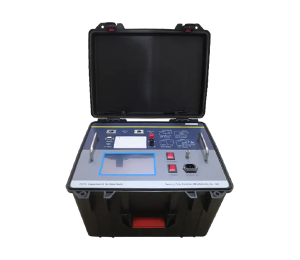 English
English



-
 Afrikaans
Afrikaans -
 Albanian
Albanian -
 Amharic
Amharic -
 Arabic
Arabic -
 Armenian
Armenian -
 Azerbaijani
Azerbaijani -
 Basque
Basque -
 Belarusian
Belarusian -
 Bengali
Bengali -
 Bosnian
Bosnian -
 Bulgarian
Bulgarian -
 Catalan
Catalan -
 Cebuano
Cebuano -
 China
China -
 China (Taiwan)
China (Taiwan) -
 Corsican
Corsican -
 Croatian
Croatian -
 Czech
Czech -
 Danish
Danish -
 Dutch
Dutch -
 English
English -
 Esperanto
Esperanto -
 Estonian
Estonian -
 Finnish
Finnish -
 French
French -
 Frisian
Frisian -
 Galician
Galician -
 Georgian
Georgian -
 German
German -
 Greek
Greek -
 Gujarati
Gujarati -
 Haitian Creole
Haitian Creole -
 hausa
hausa -
 hawaiian
hawaiian -
 Hebrew
Hebrew -
 Hindi
Hindi -
 Miao
Miao -
 Hungarian
Hungarian -
 Icelandic
Icelandic -
 igbo
igbo -
 Indonesian
Indonesian -
 irish
irish -
 Italian
Italian -
 Japanese
Japanese -
 Javanese
Javanese -
 Kannada
Kannada -
 kazakh
kazakh -
 Khmer
Khmer -
 Rwandese
Rwandese -
 Korean
Korean -
 Kurdish
Kurdish -
 Kyrgyz
Kyrgyz -
 Lao
Lao -
 Latin
Latin -
 Latvian
Latvian -
 Lithuanian
Lithuanian -
 Luxembourgish
Luxembourgish -
 Macedonian
Macedonian -
 Malgashi
Malgashi -
 Malay
Malay -
 Malayalam
Malayalam -
 Maltese
Maltese -
 Maori
Maori -
 Marathi
Marathi -
 Mongolian
Mongolian -
 Myanmar
Myanmar -
 Nepali
Nepali -
 Norwegian
Norwegian -
 Norwegian
Norwegian -
 Occitan
Occitan -
 Pashto
Pashto -
 Persian
Persian -
 Polish
Polish -
 Portuguese
Portuguese -
 Punjabi
Punjabi -
 Romanian
Romanian -
 Russian
Russian -
 Samoan
Samoan -
 Scottish Gaelic
Scottish Gaelic -
 Serbian
Serbian -
 Sesotho
Sesotho -
 Shona
Shona -
 Sindhi
Sindhi -
 Sinhala
Sinhala -
 Slovak
Slovak -
 Slovenian
Slovenian -
 Somali
Somali -
 Spanish
Spanish -
 Sundanese
Sundanese -
 Swahili
Swahili -
 Swedish
Swedish -
 Tagalog
Tagalog -
 Tajik
Tajik -
 Tamil
Tamil -
 Tatar
Tatar -
 Telugu
Telugu -
 Thai
Thai -
 Turkish
Turkish -
 Turkmen
Turkmen -
 Ukrainian
Ukrainian -
 Urdu
Urdu -
 Uighur
Uighur -
 Uzbek
Uzbek -
 Vietnamese
Vietnamese -
 Welsh
Welsh -
 Bantu
Bantu -
 Yiddish
Yiddish -
 Yoruba
Yoruba -
 Zulu
Zulu
gas chromatography gases
Gas Chromatography Understanding the Role of Gases
Gas chromatography (GC) is a powerful analytical technique widely used in various scientific fields, including chemistry, environmental science, and pharmaceuticals. It is particularly effective for separating and analyzing compounds that can be vaporized without decomposition. At the heart of GC lies the interaction between gases, making the understanding of these gases critical for effective utilization of the technique.
In gas chromatography, a sample is vaporized and carried by a carrier gas, commonly helium or nitrogen, through a column packed with a stationary phase. This process allows for the separation of different components within the sample based on their volatilities and interactions with the stationary phase. The choice of carrier gas is crucial, as it affects the efficiency, resolution, and reproducibility of the analysis.
Types of Gases Used in GC
The most commonly used carrier gases in gas chromatography include helium, nitrogen, hydrogen, and carbon dioxide. Each of these gases has unique properties that can impact the outcome of an analysis.
1. Helium Helium is the most widely used carrier gas because of its inertness, low viscosity, and good thermal conductivity. Its low density allows for faster elution of samples, which improves resolution and reduces analysis time. However, helium can be relatively expensive compared to other options.
2. Nitrogen Nitrogen is another popular choice due to its availability and lower cost. It is also inert and provides adequate separation for many applications. However, nitrogen has higher viscosity than helium, which can lead to longer analysis times and potentially lower resolution in some cases.
gas chromatography gases

3. Hydrogen Hydrogen is an excellent carrier gas in terms of efficiency and speed. It has a very low viscosity and can offer higher sensitivity in detectors. Nevertheless, safety concerns arise with hydrogen due to its flammability and explosive potential, necessitating strict safety protocols during its use.
4. Carbon Dioxide Although not as commonly used as the others, carbon dioxide can serve as a carrier gas in specific applications, particularly in supercritical fluid chromatography. Its unique properties allow for the separation of certain compounds that may not be effectively analyzed using traditional methods.
The Role of Gases in GC Efficiency
The choice of gases not only affects the separation process itself but also influences the interaction between the sample and the stationary phase. Factors such as the flow rate of the carrier gas, its temperature, and the pressure within the system can significantly impact the retention time of analytes. An optimal flow rate enhances the efficiency of the separation by providing a balance between speed and resolution.
In addition, the choice of gases impacts the sensitivity and detection limits of the analysis. For instance, the use of hydrogen may provide better sensitivity in flame ionization detectors (FID) compared to other gases, but it requires careful handling to mitigate risks.
Conclusion
Gas chromatography is an essential tool in analytical chemistry, with the choice of gases playing a pivotal role in the effectiveness of the technique. Understanding the properties and behaviors of different gases allows chemists and analysts to optimize their methods, achieve better resolution, and obtain accurate results. As technology continues to advance, the role of gases in gas chromatography will likely evolve, presenting new opportunities and challenges for future developments in the field. While conventional gases remain predominant, ongoing research may lead to innovative solutions that enhance the efficiency and safety of this vital analytical method.
-
Using Distillation Range Testers in the Food and Beverage IndustryNewsApr.16,2025
-
The Impact of IoT on Distillation Range Tester PerformanceNewsApr.16,2025
-
The Best Distillation Range Testers for Extreme ConditionsNewsApr.16,2025
-
How Distillation Range Testers Save Time and MoneyNewsApr.16,2025
-
Distillation Devices for Advanced Separation TechniquesNewsApr.16,2025
-
Common Mistakes to Avoid When Using a Distillation Range TesterNewsApr.16,2025



